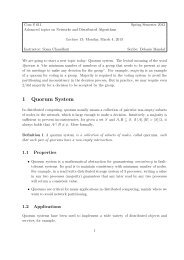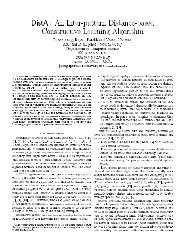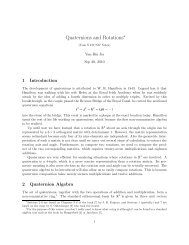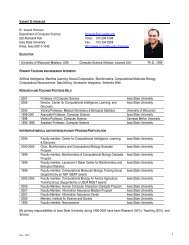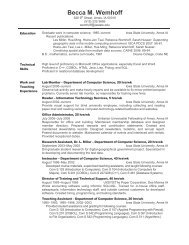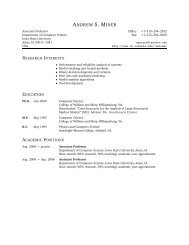Simulation Fitting Method for Setting Motion Parameters of Robotic ...
Simulation Fitting Method for Setting Motion Parameters of Robotic ...
Simulation Fitting Method for Setting Motion Parameters of Robotic ...
You also want an ePaper? Increase the reach of your titles
YUMPU automatically turns print PDFs into web optimized ePapers that Google loves.
In which, , each represents the head and tail <strong>of</strong> the rod; J represents moment inertia, and in<br />
this situation where rigid even rod rotate surrounding its end, 。<br />
Then:<br />
(2) For both head and tail free rods.<br />
According to Newton second law:<br />
And work energy relationship:<br />
<br />
<br />
<br />
<br />
<br />
<br />
<br />
(4)<br />
<br />
<br />
<br />
<br />
<br />
<br />
(5)<br />
<br />
Then we get:<br />
<br />
<br />
<br />
<br />
<br />
<br />
<br />
(6)<br />
<br />
<br />
<br />
<br />
<br />
<br />
<br />
<br />
<br />
<br />
<br />
<br />
<br />
<br />
<br />
<br />
<br />
<br />
<br />
<br />
<br />
<br />
<br />
<br />
(7)<br />
<br />
<br />
(8)<br />
<br />
If we simulate w ith equal step, in one step, rod’s shift is proportional to and its rotate angle to .<br />
4.2.2 Analyze the link<br />
An obvious fact is that the link must not be broken, so the tail <strong>of</strong> a <strong>for</strong>mer rod should keep<br />
pace with the head <strong>of</strong> the latter one. In this way, the plain shift <strong>of</strong> the latter<br />
one will cause rotation<br />
on the <strong>for</strong>mer one. Since the shift in every step is much smaller than the rod’s length, the rotation<br />
angle is proportional to <strong>of</strong> the latter one. Suppose ∆ is the modifying rotation angle caused<br />
by this effect, then:<br />
∆ ∆ / <br />
(9)<br />
In which ∆ represents the plain shift <strong>of</strong> the latter rod; represents the length <strong>of</strong> the <strong>for</strong>mer. So<br />
far we have calculated all crucial parameters <strong>of</strong> the model.<br />
4.3 Experimental modeling and simulation<br />
According to the physical model above, it’s easy to program and simulate with equal step<br />
method in Matlab. When the precision comes to certain range, result is got. Flowchart <strong>of</strong><br />
simulation program is shown as Figure 7. The result <strong>of</strong> simulation is shown as Figure 8.<br />
With SFM, we can repeat the simulation and get link shape at other time points one by one<br />
and finally get every shape.<br />
5 Comparison and Analysis<br />
JLM per<strong>for</strong>ms well when the second derivative <strong>of</strong> the curve varies slightly, that is when curve<br />
is close to straight line. Nevertheless, in general, accumulated error is unavoidable, especially<br />
when the curve is concave or convex function.<br />
SFM avoids that kind <strong>of</strong> error theoretically, and gets similar amplitude with the original curve.<br />
Of course, different factors always violate each other. When the curve is close to straight line, the<br />
link we get doesn’t stick tightly to the curve; instead, there is a small gap, which, in fact, can be<br />
neglected. Besides, the computational complexity <strong>of</strong> SFM is a little higher than that <strong>of</strong> JLM.<br />
Table 1 gives 2 kinds <strong>of</strong> error by the two methods. Linear error (err) is the integral <strong>of</strong>



